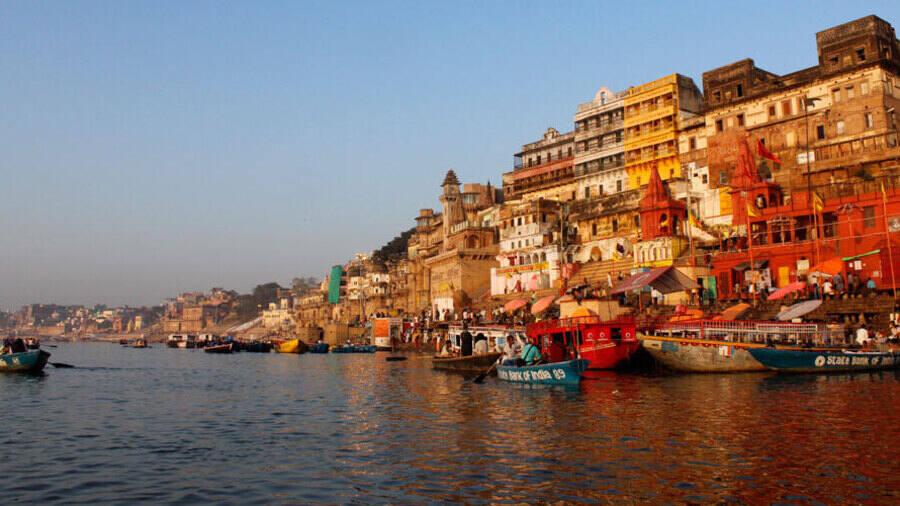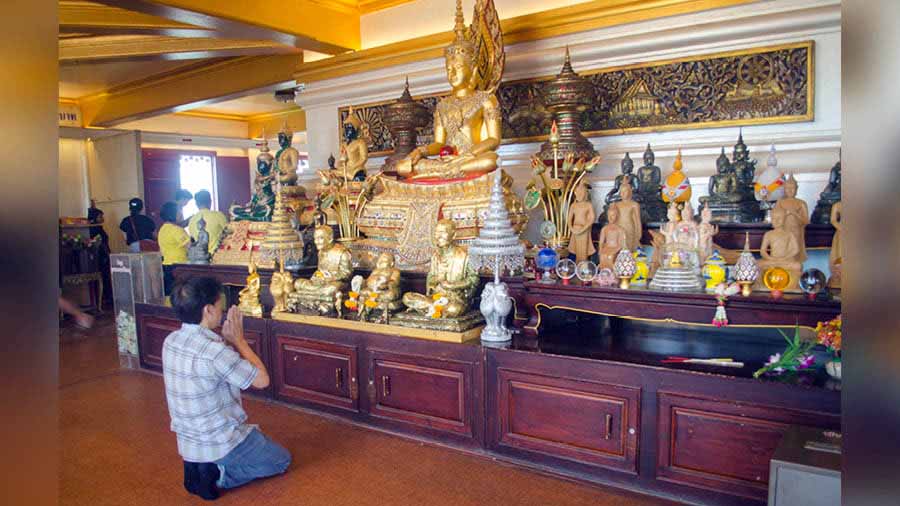Sarnath, along with Lumbini, Bodh Gaya and Kushinagar, is directly involved with the life of Goutam Buddha. Lumbini was the place of his birth, while Kushinagar was the place of his death. Buddha attained enlightenment at Bodh Gaya and preached his first sermon at Sarnath. So, Sarnath happens to be a prime Buddhist pilgrimage spot and part of the famed Buddhist circuit. Today, Sarnath houses an interesting mix of archaeological ruins and new Buddhist temples. It is a popular tourist destination and is best explored in a day from Varanasi.
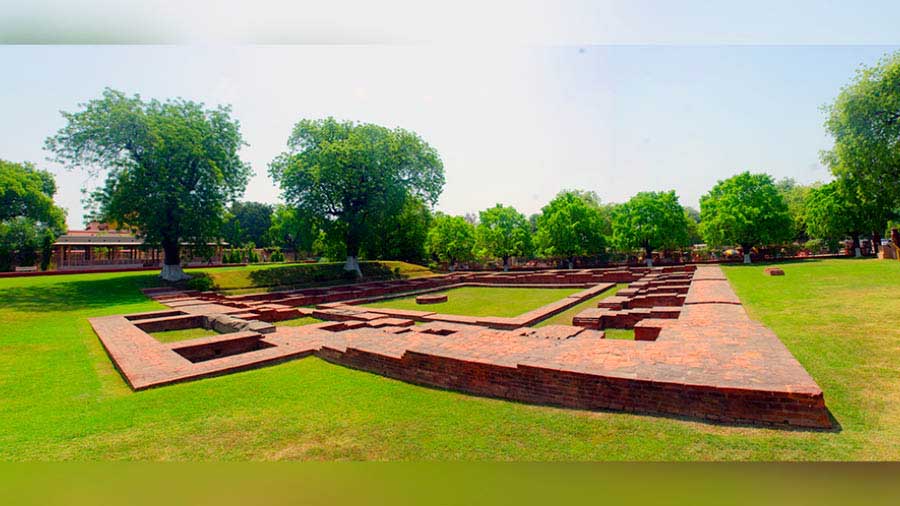
An excavated monastery at the main archaeological site of Sarnath
The earliest archaeological excavation at Sarnath dates back to 1798. It was followed by a series of excavations spanning over a century, involving leading archeologists like Alexander Cunningham and Dayaram Sahani. These excavations revealed a treasure trove of antiquities dating from the 3rd century BCE to the 12th century CE. It included the Ashokan pillar with the lion capital, which later became the state emblem of Independent India. The excavation revealed structural remains of stupas, monasteries and temples, which are now protected monuments under the Archaeological Survey of India (ASI).
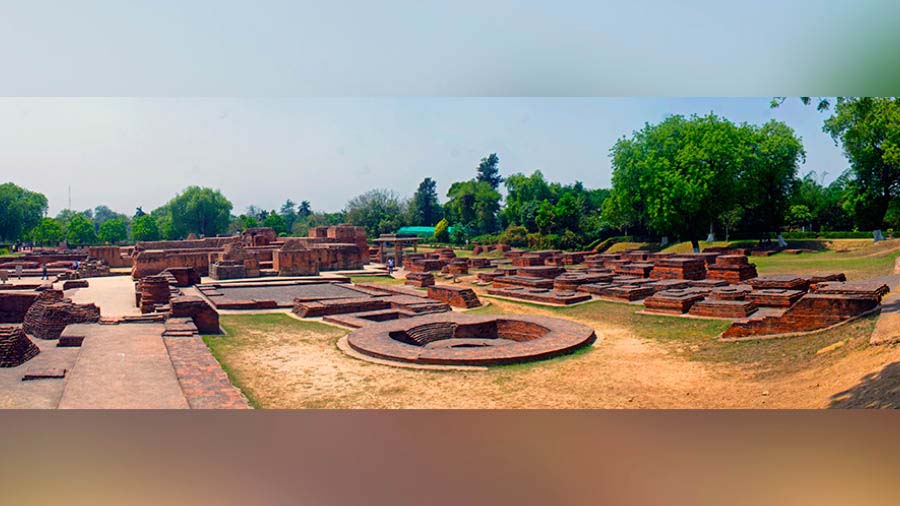
Remains of the main shrine (Mulagandha Kuti)
The Sarnath tour is best started from the archaeological site museum. The museum has a sandstone façade which blends with the nearby excavated ruins and gives it an antique look. The 1910-built museum has seven galleries, including two verandah galleries. The lion capital welcomes visitors into the museum. The museum also exhibits several statues and artifacts collected during the numerous excavations at Sarnath.
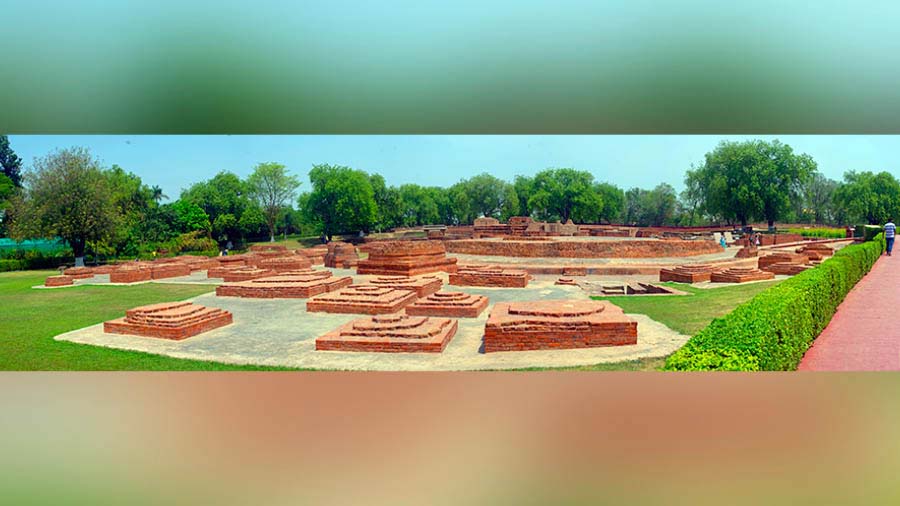
Scattered ruins adjoining the Dharmarajika Stupa
Next to the site museum lie the excavated ruins of Sarnath, known as the main complex. It is dominated by the towering Dhamekh Stupa. The scattered ruins consist of several monasteries, votive stupas, ruined temples and portions of the Ashokan pillar. Apart from the Dhamekh Stupa, the site also houses another stupa. It is the Dharmarajika Stupa dating back to the time of Ashoka. Sadly, only its base remains to this day.

Lion Capital displayed at the Sarnath Archaeological Museum
The Dharmarajika Stupa is surrounded with scattered ruins, which includes the Ashokan Pillar lying on the northwest of the stupa. A small portion of the pillar, with a few inscriptions, has survived. It is placed under a pavilion with glass walls. East of the pillar stands the main shrine, known as Mulagandha Kuti. The ruins are said to be part of a huge temple built over the place where Buddha used to sit for meditation. A path lined with ruined stupas leads towards the towering Dhamekh Stupa. The complex also houses the remains of several monasteries and other structures.

Chaukhandi Stupa, Sarnath
The other historical structure in Sarnath is the Chaukhandi Stupa, named for its four armed plan. The stupa marks the place where Buddha met his disciples for the first time. The stupa was probably built during the Gupta period (4 – 5th century CE) and finds a mention in the travel accounts of Xuanzang (popularly known as Husan Tsang) who toured the region mid 7th century CE. The octagonal tower which towers above the stupa happens to be a later addition. It was commissioned by Akbar in 1567 to commemorate Humayun’s visit to Sarnath in 1532.
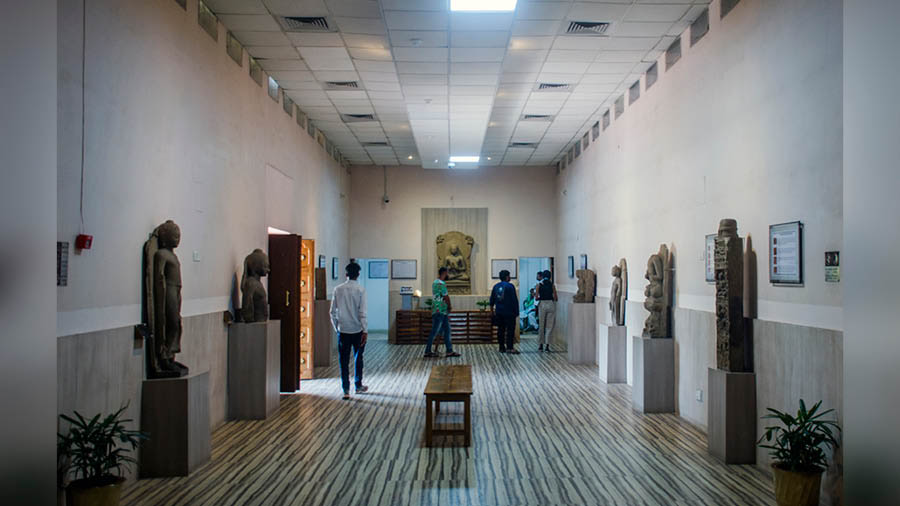
A galley at the Sarnath Archaeological Museum
Apart from the museum and two archaeological sites, Sarnath also has a share of Buddhist temples constructed by countries where Buddhism is a major religion. They include China, Japan, Thailand, etc. and even Tibet.
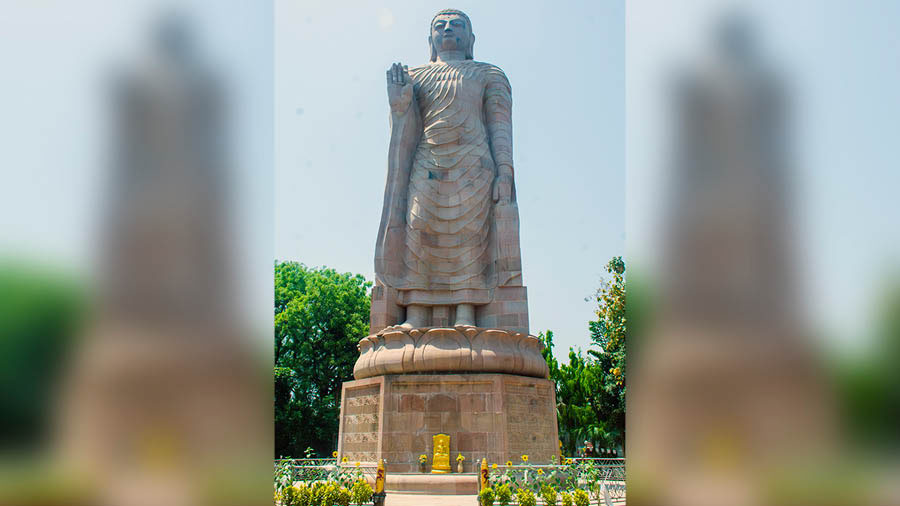
The giant standing Buddha statue, which is 86-feet tall
There is also a temple run by the Maha Bodhi Society. Among these, the Thai temple is the most easily accessible. It lies on the road connecting the main archeological site of Sarnath to the Chaukhandi Stupa. The temple is known for its giant standing Buddha statue, which towers to a height of 86 feet. People with more time and energy can head for the other Buddhist temple to enjoy the solitude before returning to the chaotic ghats and lanes of Varanasi.
Travel information:
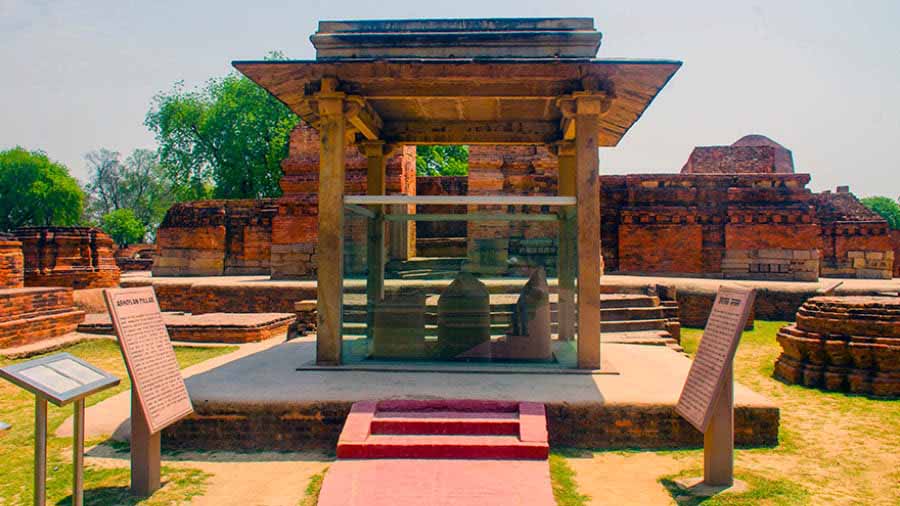
Ashokan Pillar at the main archaeological site of Sarnath
Getting there: Sarnath is best explored as a day trip from Varanasi. Autos are available from Benaras. Direct autos need to be booked and costs around ₹150 (subject to bargaining). Shared autos are also available from the Benaras railway station with a break at Pandeypur (₹20 + ₹20).
Timing: All archaeological sites and museums are open from 9am – 6pm. The museum is closed on Friday
Photography: Allowed in all places, including the inside of the museum



